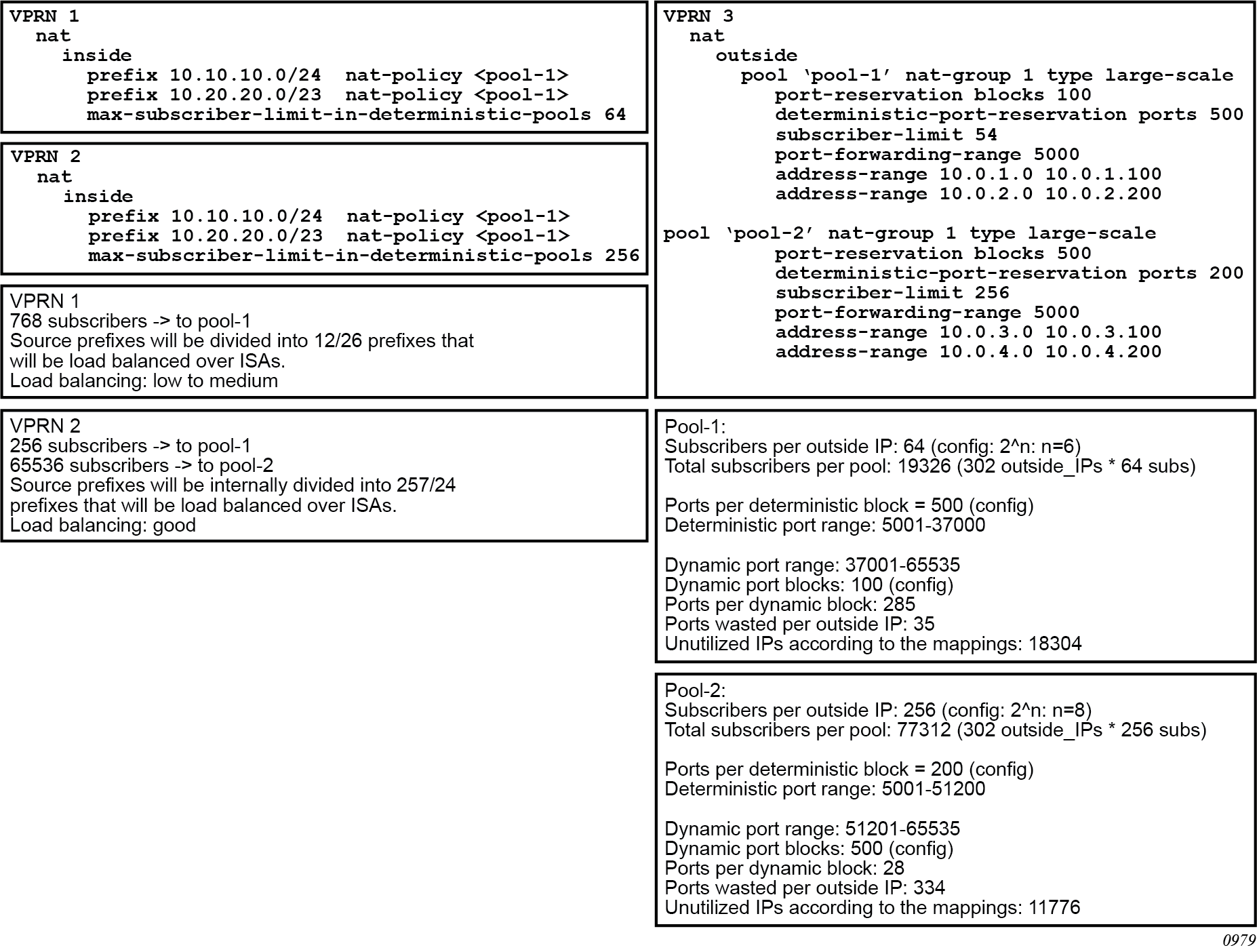Support for multiple MS-ISAs in the nat-group calls for traffic hashing on the inside in the ingress direction. This ensures fair load balancing of the traffic amongst multiple MS-ISAs. While hashing in non-deterministic LSN44 can be performed per source IP address, hashing in deterministic LSN44 is based on subnets instead of individual IP addresses. The length of the hashing subnet is common for all configured prefixes within an inside routing instance. In case that a prefixes from an inside routing instances is referencing multiple pools, the common hashing prefix length is chosen according to the pool with the highest number of subscribers per outside IP address. This ensures that subscribers mapped to the same outside IP address are always hashed to the same MS-ISA.
In general, load distribution based on hashing is dependent on the sample. Large and more diverse sample ensures better load balancing. Therefore the efficiency of load distribution between the MS-ISAs is dependent on the number and diversity of subnets that hashing algorithm is taking into consideration within the inside routing context.
A simple rule for good load balancing is to configure a large number of subscribers relative to the largest t subscriber-limit parameter in any pool that is referenced from this inside routing instance.

The configuration example shown Figure: Deterministic LSN44 configuration example depicts a case in which prefixes from multiple routing instances are mapped to the same outside pool and at the same time the prefixes from a single inside routing instance are mapped to different pools (we do not support the latter with non-deterministic NAT).